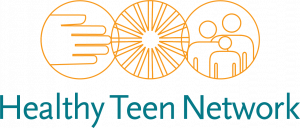Puberty is a time of physical, emotional, and social changes that can cause some young people great angst. Equipping students with the knowledge and skills about these changes can help them navigate through this challenging time and emerge strong, happy, and healthy. This workshop will provide you with a number of lessons to teach students about the changes of puberty, and will help you improve your skills on addressing this sensitive topic in an inclusive way. This workshop can be tailored to meet the specific needs of your group, school, or agency. All content is aligned with the National Sexuality Education Standards, the National Teacher Preparation Standards for Sexuality Education, and the Professional Learning Standards for Sex Education.
Training Hub
The Sex Education Collaborative Training Hub lists trainings for sex educators, facilitators, and other professionals on best practices for sharing important information with clients and the public. From teaching anatomy inclusively to effectively addressing bias in the classroom to addressing racial justice and equity in sex education, the Training Hub includes trainings, technical assistance, and policy support from state, regional, and national leaders in the field of sex education.
Please note: The Training Hub includes both in-person and online professional trainings. If you see a training you are interested in and it isn’t listed as virtual, please reach out directly to any of our members to find out what's possible!
Trainings Offered by State-Based and National Organizations
Displaying results 111 - 115 of 137Puberty 101: Teaching about the Birds and the Bees
- Indicator 2 (K-12): Demonstrate three student-centered instructional approaches that support a variety of learning styles. (S)
- Indicator 2 (K-12): List three physical, three social, and three emotional changes that occur during puberty.
- Indicator 3 (K-12): Identify three practices that students can adopt for maintaining healthy habits beginning during puberty.
Working Effectively with Adolescents
This workshop will help sex education instructors use research on adolescent social, cognitive, and biological development to improve the way they communicate with adolescents. Participants will learn techniques for engaging with adolescents and building buy-in to messages about behavior.
- Indicator 1 (K-12): Demonstrate three techniques to create an inclusive and affirming learning environment. (S)
- Indicator 1 (K-12): Demonstrate the ability to build rapport with students. (S)
- Indicator 3 (K-12): Explain the differences between positive vs. shaming approaches to teaching sex education.
- Indicator 6 (K-12): Describe three strategies for actively involving parents, caregivers, and other trusted adults in a sex education program.
- Indicator 2 (K-12): List three physical, three social, and three emotional changes that occur during puberty.
- Indicator 1 (K-12): Explain three reasons why it is important to respond to every question students ask when teaching sex education.
- Indicator 2 (K-12): Demonstrate the ability to effectively respond to three different types of challenging questions. (S)
Virtual PD - Adapting Lessons for Students Who Are Transgender and Gender Expansive
Virtual Professional Development is a simulated classroom where teachers can practice teaching student avatars using short scenarios and support from an instructional coach, so they can quickly learn and master the skills they most need to be effective. With upper elementary, middle and high school classrooms, Virtual PD has scenarios for teachers of all grade levels across a wide range of topics aligned with the Professional Learning Standards for Sex Education (PLSSE). You can watch the video here (link is external) to learn more about Virtual PD.
Using the Virtual Professional Development simulated classroom, the educator will practice Adapating Lessons for Students Who Are Transgender and Gender Expansive with the student avatars. In this VPD scenario, the educator will review a brief passage, examine the use of language and adapt the passage to remove assumptions about gender identity. Once in the simulation with five students, the participant will lead a brainstorm activity about STDs and how they can be prevented. The participant will need to demonstrate three strategies that can be used to make lessons affirming for students of all gender identities.
- Indicator 2 (K-12): Demonstrate the use of inclusive and affirming language. (S)
- Indicator 9 (K-12): Demonstrate three strategies that can be used to make lessons affirming for transgender and gender expansive people. (S)
Virtual PD - Student Centered Learning When Teaching Sex Education
Virtual Professional Development is a simulated classroom where teachers can practice teaching student avatars using short scenarios and support from an instructional coach, so they can quickly learn and master the skills they most need to be effective. With upper elementary, middle and high school classrooms, Virtual PD has scenarios for teachers of all grade levels across a wide range of topics aligned with the Professional Learning Standards for Sex Education (PLSSE). You can watch the video here (link is external) to learn more about Virtual PD.
Using the Virtual Professional Development classroom simulator, the educator will practice implementing Student Centered Learning When Teaching Sex Education with the student avatars. In this scenario, the educator will be modifying an activity that teaches their students how to use condoms correctly for varying learning styles. Participants are encouraged to stretch to use a learning style different from those they are personally strong at. Key content and ideas for adaptations are included in the short video educators should watch prior to the simulation so they can be prepared to use their adaptations.
- Indicator 2 (K-12): Demonstrate three student-centered instructional approaches that support a variety of learning styles. (S)
Understanding the Adolescent Brain
During this session, participants will learn about neuro-biological findings from adolescent brain research as they apply to cognitive and behavioral changes, such as risk taking, relationship building and social development. The facilitators will describe findings in emerging fields informed by neuroscience, such as the effects of sleep, technology and stress on the developing brain. Based on the findings outlined, participants will explore some unique teaching and learning strategies for reaching adolescents, all linked to cognitive engagement, impulse control, and decision making. They will identify a set of adult behaviors and attitudes that might best engage, influence, and motivate teens, and are strongly encouraged to make a shift in how they think about and approach the adolescent learner.
Objectives of this course:
- Describe the unique developmental features of the adolescent brain and the implications for adolescent cognition and behavior.
- Describe current research on factors that influence the developing adolescent brain, including sleep, substances, stress, and technology.
- Identify strategies that draw upon brain research to engage the adolescent learner in avoiding risk behaviors.
- Implement a personal plan of action for refining their skills in effectively engaging adolescent learners.
Visit ETR's Training & TA Form to submit your request and receive cost information.
- Indicator 2 (K-12): Demonstrate three student-centered instructional approaches that support a variety of learning styles. (S)
- Indicator 5 (K-12): Describe three effective strategies for practicing skills with students.
- Indicator 7 (K-12): Demonstrate the ability to analyze and tailor lesson plans to match the age, developmental stages, cultural backgrounds, and other identities of students. (S)
- Indicator 2 (K-12): List three physical, three social, and three emotional changes that occur during puberty.
Additional Trainings offered by out-of-state organizations
- ‹ previous
- 39 of 49
- next ›
Sexual Violence in the Media
The media plays a huge role in how we think about sex and sexuality. Using TV clips, movie scenes, ads and songs, we will explore how the media portrays sexual violence. We will also discuss how we can use the media to have constructive conversations regarding sexual violence in our daily lives.
- Indicator 3 (K-12): Describe three strategies for teaching students communication skills.
- Indicator 4 (K-12): Describe three strategies for incorporating the positive and negative impacts of communicating through technology into lessons on healthy relationships.




